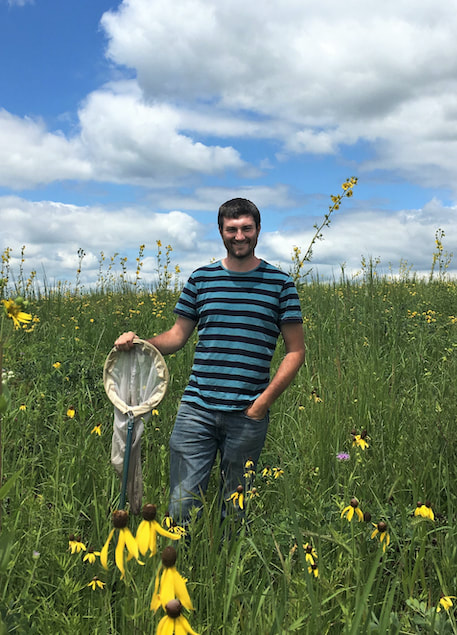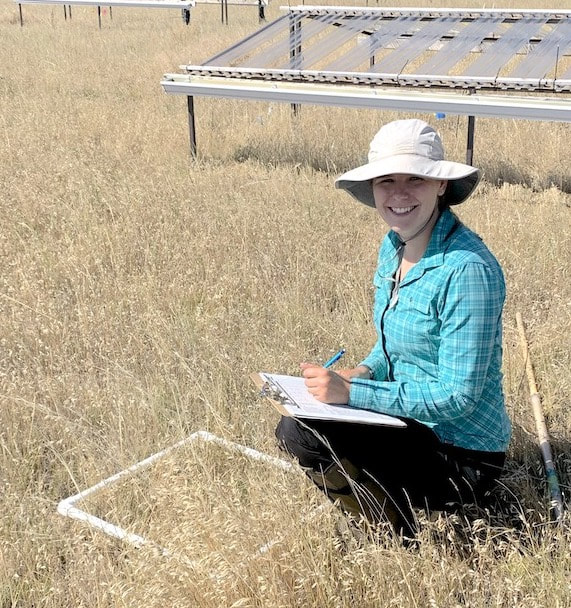Friends of Nachusa Grasslands 2021 Scientific Research Grants – $62,335
To support scientific endeavors, Friends of Nachusa Grasslands awards monetary grants to qualified candidates conducting scientific research significant to Nachusa Grasslands.
Research projects focus primarily on prairie, savanna, wetland, woodland, and stream habitat management, such as prescribed fire, seed collection, weed control, general or specific flora or faunal populations, and natural areas restoration.
Thanks to a 1:1 challenge grant and the generous support of individual donors, organizations, and foundations, Friends has awarded $62,335 for 2021-2022, divided in varying amounts among thirteen researchers.
Research projects focus primarily on prairie, savanna, wetland, woodland, and stream habitat management, such as prescribed fire, seed collection, weed control, general or specific flora or faunal populations, and natural areas restoration.
Thanks to a 1:1 challenge grant and the generous support of individual donors, organizations, and foundations, Friends has awarded $62,335 for 2021-2022, divided in varying amounts among thirteen researchers.
Donations to Friends can be designated to Scientific Research Grants.
2021 Grant Recipients, Projects, and Amounts
|
Kathryn Bloodworth, PhD candidate, University of North Carolina at Greensboro. “Fire Effects on Multiple Ecosystem Outcomes: A Meta-Analysis for the Land Managers of Tallgrass Prairie.” The goal of this comprehensive 3-year effort is to understand the role of fire frequency in conserving multiple ecosystem outcomes including but not limited to its effects on birds, insects, small mammals, soil characteristics, woody plants, grasses, and forbs across a wide variety of settings (including Nachusa Grasslands) in the tallgrass prairie region. This analysis should provide land managers with the information they need to make vital decisions on fire frequency for specific desired outcomes. $7,125 (in 2021).
Reb Bryant, PhD candidate, The University of Kansas. “Testing the Effect of Native Arbuscular Mycorrhizal fungi (AMF) on Prairie Restoration Success at Nachusa Grasslands.” The goal of this three-year project is to study the question of whether or not the inoculation of specific native arbuscular mycorrhizal fungi (AMF) into the soil of greenhouse grown plants can facilitate the plant abundance of “hard-to-establish” plant species in prairie restorations. If successful, this work may provide a “library” of AMF cultures that can be used to increase biodiversity in future restorations. $14,525. Luke Daniel Fannin, PhD candidate, Dartmouth College. “Functional Ecology of Competing Photosynthetic Pathways in a North American Tallgrass Prairie.” By comparing certain functional traits (fiber, toughness, abrasivity) of specific grass species at Nachusa with bison forage selectivity, Mr. Fannin’s study will provide insight into bison foraging decisions and the potential long-term effects of bison grazing on Nachusa’s plant diversity. $450. Nicholas Foster, M.S. candidate, Northern Illinois University. “Evaluating Restoration Efforts of Wetland Habitats.” Mr. Foster will be measuring the phylogenetic diversity of three of Nachusa’s wetland restorations to assess how successful the restorations have been over time. By comparing and contrasting the genetically diverse species of the current plant communities with historic monitoring data, he will be able to provide Nachusa’s stewards and managers a way to look at wetland restoration effectiveness. $1,200. Sean Griffin, PhD., University of Texas at Austin. “Understanding the Ecology and Conservation of Rare Bees at Nachusa Grasslands.” This grant will support the ongoing monitoring of Nachusa’s wild bees first begun by Dr. Bruninga-Socolar and Dr. Sean Griffin in 2013. This year’s research will focus on the ecology of the rare, at-risk bumble bee species discovered at Nachusa last year…their specific habitats, floral hosts, and time periods. Additionally, extensive sampling of bees, wasps, and flies in bison wallows, an often-overlooked habitat, will be conducted. $13,800. Sheryl C. Hosler, PhD candidate, University of Illinois at Chicago. “How Do Dung Beetles Find the 'Field of Dreams?'” This study will investigate the dispersal power and colonization ability of the small, functionally important dung beetles at Nachusa. Additionally, this study will continue the long-term biodiversity sampling of ground-dwelling arthropods at the twenty ReFuGE sites across the preserve. $2,000. To receive information about the 2023 grant guidelines and application process that will be available in the late summer, contact [email protected]. |
Richard King, PhD., Northern Illinois University, Thomas B. Anton and David Mauger, Independent researchers. “Head-Starting: A New Phase in Blanding’s Turtle Management at Nachusa Grasslands.” The ongoing effort to increase the population and promote the persistence of the state-endangered Blanding’s Turtles at Nachusa and adjacent properties within the Franklin Creek corridor entered a new phase in 2020 when thirty-seven hatchlings were released. Additional eggs were also collected in 2020, and the hatchlings have been reared for release in 2021. In addition to tracking the new “head-start” hatchlings to obtain data on their survival, movements and habitat use, this research team will track adult females to their nest sites and collect eggs for head-starting and release in 2022. $4,750.
D’Arcy R. Meyer-Dombard, PhD; Kimberly Van Meter, PhD, and Sarah Khoury, M.S. candidate, University of Illinois at Chicago. “Quantification of Microplastics in Soils and Sediments at Nachusa Grasslands, and Impact on Soil Microbiota.” The goal of this study is to determine whether soils and stream sediments at Nachusa are contaminated with microplastics generated by human activity. These researchers will also explore whether any identified microplastics are impacting the microbial communities of the soils in which they are found by comparing the microbial community diversity in contaminated sites with that in uncontaminated sites. $2,435. Erin Rowland, PhD candidate, Northern Illinois University. “Quantifying Burns: Using Drones to Numerically Assess the Success of Prescribed Burns.” The second year of this three-year study will use drone imagery to quantify the amount of any given unit actually burned during a prescribed fire event as well as the pattern and intensity of the fire. Additionally, the ongoing monitoring of small mammal populations in burn areas will shed light on the impact of prescribed fire on animals dependent on specific land cover. $3,400. Wayne Schennum, PhD., Independent researcher. “Chrysomelid Beetles and Their Host Plants at Nachusa Grasslands.” Dr. Schennum will be surveying the number and specific identity of the rarely studied leaf beetles (Chrysomelidae) in two high quality prairie remnants and their adjacent prairie restorations at Nachusa. He will also compare the populations in the adjacent communities and identify the host plants for each identified species. $3,500. [No report will be submitted, as Wayne Schennum died on August 16, 2021.] Jesse Sikora, M.S. candidate, Northern Illinois University. “How Does Habitat Fragmentation from Variable Land Management Practices Impact Beaver Activity?” This project will provide baseline data on beavers and their activity at Nachusa by 1) using aerial photos to identify possible beaver use areas, 2) verifying beaver use areas on the ground, 3) identifying tree size and other vegetation types in beaver use areas, and 4) using camera traps to estimate the number of beavers in each location and their use of the habitat. $5,150. Pallavi Singh, PhD, Northern Illinois University. “Longitudinal Characterizing of Intestinal Microbial Ecology of Bison.” The goal of this continuing study is to assess seasonal dietary variation on bison health by studying the microbial community of the animals’ intestinal tracts. Grant funds in 2021 will pay for fecal sampling, DNA isolation, and PCR molecular detection. $2,000. Laurie Spencer, PhD candidate, Northern Illinois University. “Assessment of Enteric Parasites in Wild Bison at Nachusa Grasslands.” Using microscopic analysis, PCR, and DNA sequencing, this study will measure the prevalence and abundance of intestinal parasites in Nachusa’s bison herd from new and previously collected fecal samples. Infection differences across variables such as age, sex, sample year, and diet composition will also be assessed. $2,000. |
Past research projects supported by the Friends are listed on each year's Science Grants page:
UPDATED 02/2022




